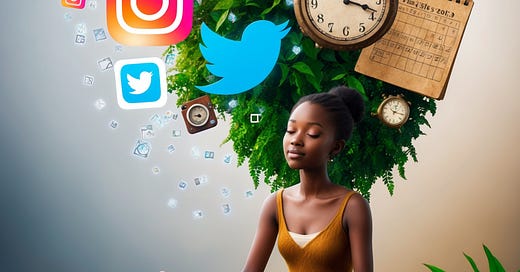The Ultimate Guide to Optimal Posting Times
Elevate Your Retreat's Reach with Perfectly Timed Social Media Posts
Navigating the intricate world of social media can be overwhelming, especially when you're aiming to maximize your retreat's visibility. To simplify this journey, I've delved deep into the latest data to provide you with tailored insights on the optimal times to post across various platforms. Let's explore each platform in detail and conclude with a comprehensive summary.
Facebook's user base predominantly comprises adults aged 25 to 44, with engagement patterns reflecting typical workday routines. Weekday mornings, particularly between 9 a.m. and 10 a.m., see heightened activity as users begin their day. Fridays at 10 a.m. stand out, capturing users winding down their week and planning for the weekend. Conversely, weekends, especially Saturdays, experience a notable decline in engagement, making them less ideal for posting.
Instagram's audience is highly active during early mornings and late afternoons. Weekdays between 7 a.m. and 8 a.m. are prime times, aligning with users' routines of checking updates during commutes or morning breaks. Fridays at 7 a.m. are particularly effective, possibly due to users' anticipation of weekend activities. Sundays, however, tend to have lower engagement rates, suggesting that users are less active on the platform during this day.
Twitter (X)
Twitter's fast-paced environment thrives on timely updates. The platform sees increased activity during mid-morning hours, with 11 a.m. on Mondays and Fridays being optimal for engagement. These times coincide with users' mid-morning breaks, making them more likely to interact with content. Late evenings and weekends generally see a dip in activity, indicating that users are less engaged during these periods.
As a professional networking site, LinkedIn's peak usage aligns with standard business hours. Posting between 9 a.m. and 5 p.m. on weekdays ensures your content reaches users during their workday. Tuesdays and Thursdays at 10 a.m. are particularly effective, capturing professionals during their morning routines. Weekends and after-hours show a significant drop in engagement, as users disconnect from work-related activities.
TikTok
TikTok's user engagement varies, but certain patterns have emerged. Posting at 2 p.m. on Mondays, 4 p.m. on Wednesdays, and 8 a.m. on Sundays can enhance visibility. These times align with users seeking entertainment during lunch breaks, mid-week pauses, or leisurely weekend mornings. However, due to the platform's diverse user base, it's beneficial to experiment with these time slots to determine what resonates best with your specific audience.
YouTube
For YouTube, timing your video releases can significantly impact viewership. Fridays between 3 p.m. and 4 p.m. are ideal, capturing users winding down their week and seeking content for the weekend. Tuesdays at 2 p.m. and Thursdays at 6 p.m. also show promising engagement, aligning with mid-week routines and evening leisure time. Weekends, particularly Sunday mornings, can also be effective, as users have more free time to consume longer content.
Summary of Optimal Posting Times
Facebook: Weekdays at 9 a.m. to 10 a.m., especially Fridays at 10 a.m.
Instagram: Weekdays between 7 a.m. and 8 a.m., with Fridays at 7 a.m. being optimal.
Twitter (X): 11 a.m. on Mondays and Fridays.
LinkedIn: Weekdays between 9 a.m. and 5 p.m., particularly Tuesdays and Thursdays at 10 a.m.
TikTok: Mondays at 2 p.m., Wednesdays at 4 p.m., and Sundays at 8 a.m.
YouTube: Fridays between 3 p.m. and 4 p.m.; Tuesdays at 2 p.m.; Thursdays at 6 p.m.; Sundays between 9 a.m. and 11 a.m.
While these recommendations are grounded in comprehensive data analysis, it's essential to consider your unique audience's habits and preferences. Monitoring your engagement metrics and adjusting your posting schedule accordingly will help in fine-tuning the optimal times for your specific content and audience.
Happy posting!
Note: The above recommendations are based on data from various studies and may vary depending on your specific audience and industry.




